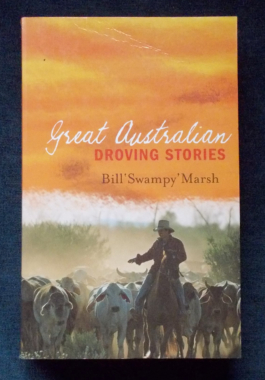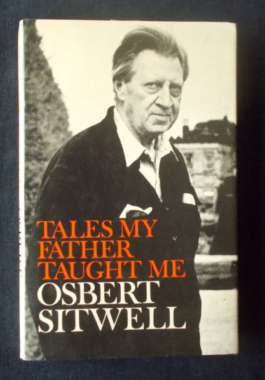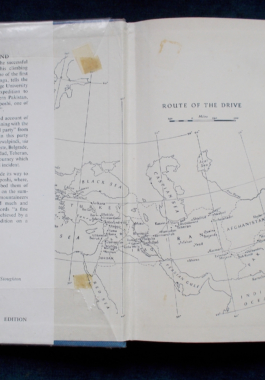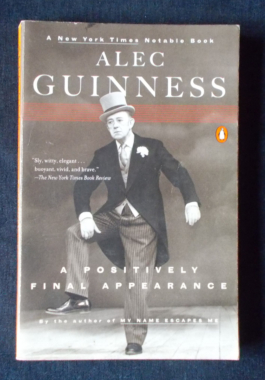The sequel to Crow On A Barbed Wire Fence. Bluey's adventures did not end with his departure from Australia in 1914. In this sequel he tells of his London childhood and why he visited Australia in the first place. There's also the tale of his escape from the German naval fleet in World War I, his role in two mutinies and the headline stories he reported as a Fleet Street journo, sportswriter and radio interviewer. Last but not least, he tells of his family life and his achievements as a successful magazine publisher - what a full, rich and adventurous life!
-

Bluey: Harold Lewis
$12.00 -
 A fabulous little reference work written by a gardener who really did learn from trial and error from the time she was a child. A great many of our beautiful flowers and how to grow them are here:Christmas Bush, Native Hops, Banksia Honeysuckles, the cheerful Happy Wanderer (or Hardenbergia violacea) Brachycome, Native Mint and much more. Illustrated with colour lline drawings and paintings by the author.
A fabulous little reference work written by a gardener who really did learn from trial and error from the time she was a child. A great many of our beautiful flowers and how to grow them are here:Christmas Bush, Native Hops, Banksia Honeysuckles, the cheerful Happy Wanderer (or Hardenbergia violacea) Brachycome, Native Mint and much more. Illustrated with colour lline drawings and paintings by the author. -
 Before utes, trucks, road trains, planes and helicopters, drovers moved stock over the vast Australian distances. It was a life often isolated and difficult, but also filled with adventure and wry humour. Drovers, ringers, duffers and scoundrels: a hard bunch of white, black, half-caste and mixed race folk who knew all the tricks of the trade. Marsh collected these stories in his outback travels and the tales are told in the authentic voices of the men and women who lived the life.
Before utes, trucks, road trains, planes and helicopters, drovers moved stock over the vast Australian distances. It was a life often isolated and difficult, but also filled with adventure and wry humour. Drovers, ringers, duffers and scoundrels: a hard bunch of white, black, half-caste and mixed race folk who knew all the tricks of the trade. Marsh collected these stories in his outback travels and the tales are told in the authentic voices of the men and women who lived the life. -
 The Sitwell family are inseparable from the social history of the 1930s. They sponsored all new art and literature movements in order to appear avant garde and members of the literati of the time. Sir Osbert Sitwell's autobiography ran for five volumes and from these emerged not only portraits of Sir Osbert, but of his eccentric and gifted father. This is the collection of tales and memories that were omitted from the autobiography and first published in 1962. Illustrated with black and white photographs.
The Sitwell family are inseparable from the social history of the 1930s. They sponsored all new art and literature movements in order to appear avant garde and members of the literati of the time. Sir Osbert Sitwell's autobiography ran for five volumes and from these emerged not only portraits of Sir Osbert, but of his eccentric and gifted father. This is the collection of tales and memories that were omitted from the autobiography and first published in 1962. Illustrated with black and white photographs. -
 Fear lives among Everest's mighty ice-fluted faces and howls across its razor-sharp crags. Gnawing at reason and enslaving minds, it has killed many and defeated countless others. But in 1953, Edmund Hillary and Tenzing Norgay stared into its dark eye and did not waver. On May 29, they pushed spent bodies and aching lungs past the achievable to pursue the impossible. At a terminal altitude of 29,028 feet, they stood triumphant atop the highest peak in the world. With nimble words and a straightforward style, New Zealand mountaineering legend Hillary recollects the bravery and frustration, the agony and glory that marked his Everest odyssey.
Fear lives among Everest's mighty ice-fluted faces and howls across its razor-sharp crags. Gnawing at reason and enslaving minds, it has killed many and defeated countless others. But in 1953, Edmund Hillary and Tenzing Norgay stared into its dark eye and did not waver. On May 29, they pushed spent bodies and aching lungs past the achievable to pursue the impossible. At a terminal altitude of 29,028 feet, they stood triumphant atop the highest peak in the world. With nimble words and a straightforward style, New Zealand mountaineering legend Hillary recollects the bravery and frustration, the agony and glory that marked his Everest odyssey. -

 George Band, the youngest member of the successful Everest team and his climbing companion Joe Brown, one of the first pair to climb Kangchenjunga, tells the story of the 1954 Cambridge University Mountaineering Club's expedition in Northern Pakistan, its objective being Rakaposhi - one of the grandest mountains. This is a lively and vivid account of the whole adventure, beginning with the departure of the overland party from Cambridge. Three of this party drove the whole way to Rawalpindi, via Dover, Paris, Lucerne, Trieste, Belgrade, Istanbul, Damascus, Tehran, Quetta and Peshawar. The expedition then made its way to the Karakoram and Rakaposhi, where although weather robbed them of any chance of an attempt on the summit, these six young mountaineers achieved and experienced much and gave - in Eric Shipton's words - 'a fine example of what may be achieved by a privately conducted expedition on a high and difficult peak'. Illustrated with black and white photographs.
George Band, the youngest member of the successful Everest team and his climbing companion Joe Brown, one of the first pair to climb Kangchenjunga, tells the story of the 1954 Cambridge University Mountaineering Club's expedition in Northern Pakistan, its objective being Rakaposhi - one of the grandest mountains. This is a lively and vivid account of the whole adventure, beginning with the departure of the overland party from Cambridge. Three of this party drove the whole way to Rawalpindi, via Dover, Paris, Lucerne, Trieste, Belgrade, Istanbul, Damascus, Tehran, Quetta and Peshawar. The expedition then made its way to the Karakoram and Rakaposhi, where although weather robbed them of any chance of an attempt on the summit, these six young mountaineers achieved and experienced much and gave - in Eric Shipton's words - 'a fine example of what may be achieved by a privately conducted expedition on a high and difficult peak'. Illustrated with black and white photographs. -

About every eight decades, give or take, and coincident with the most stressful and perilous events in U.S. history – the Revolutionary and Civil Wars, the Great Depression and World War II – a new, positive, accomplished ‘civic generation’ emerges to change the course of history and to remake America. The Millennial Generation (born between 1982 – 2003) is America’s newest civic generation. They made their mark by electing Barack Obama to the White House and going beyond that pivotal event, Millennial Momentum goes on to tell the story of how this next great generation will transform other areas of American culture – from education to entertainment, from workplace to home and from business to politics and government. Drawing from an impressive array of demographic data, popular texts and personal interviews, the authors show how the socially tolerant, ethnically diverse and technologically fluent Millennials can help guide the United States to retain its leadership of the world community and global marketplace.
-
 Sir Alec Guinness (1914 - 2000) makes his observations on Britain, taken from his journal at the tumultuous times of Princess Diana's death, the election of Tony Blair and comments on his quintessentially English country life with Mrs Guinness. A follow up to My Name Escapes Me, this volume covers 1996 - 1998. Sir Alec offers frank and surprising reflections on appearing in Star Wars and hilarious reminiscences of Humphrey Bogart and Noel Coward.
Sir Alec Guinness (1914 - 2000) makes his observations on Britain, taken from his journal at the tumultuous times of Princess Diana's death, the election of Tony Blair and comments on his quintessentially English country life with Mrs Guinness. A follow up to My Name Escapes Me, this volume covers 1996 - 1998. Sir Alec offers frank and surprising reflections on appearing in Star Wars and hilarious reminiscences of Humphrey Bogart and Noel Coward. -
 Published in 1940, Daphne du Maurier turned from fiction to write the true stories of everyday English people who, while following the common round of their daily lives, have given their best to their country and done deeds of gallantry in their respective spheres in a time of war. The mother who triumphed over bereavement, the London grocer who settled labor disputes at the pithead - all were able to turn the difficulties of war time into opportunities to spread a spirit of victory on the Home Front.
Published in 1940, Daphne du Maurier turned from fiction to write the true stories of everyday English people who, while following the common round of their daily lives, have given their best to their country and done deeds of gallantry in their respective spheres in a time of war. The mother who triumphed over bereavement, the London grocer who settled labor disputes at the pithead - all were able to turn the difficulties of war time into opportunities to spread a spirit of victory on the Home Front.


